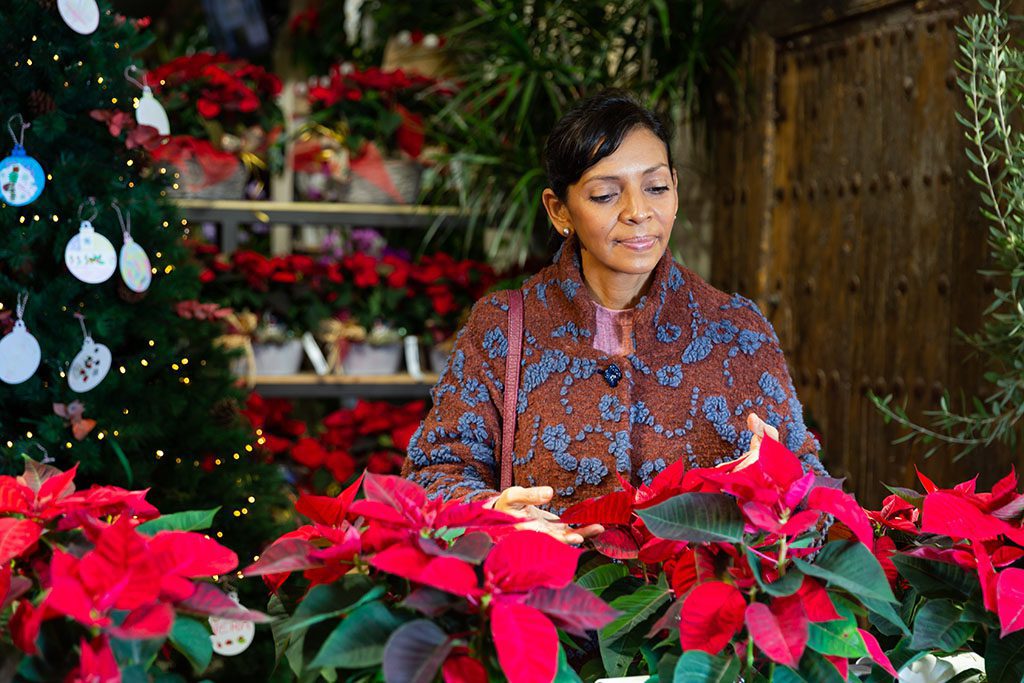
A recent survey showed that some consumers are cutting back on holiday spending out of fear of a recession. Retail florists and an industry expert offered strategies to mitigate the impact and keep profit margins strong.
No retail florist wants to hear that consumers are spending less leading into the holidays, but a consumer confidence poll arrived in September like a stocking full of coal. According to IPSOS, 84 percent of Americans think the U.S. will enter a recession by year’s end, and 28 percent will cut back on holiday spending as a precaution.
Retail florists can help mitigate the impact on their businesses by pricing flowers carefully, offering arrangements for every budget, and reminding consumers of the benefit of blooms, florists and other experts advise.
The Right Price
“I think we’re seeing people be more careful,” says Amy Hawke, general manager of the Flower Patch.
The Salt Lake City, Utah-based shop still serves approximately the same number of customers at its eight locations, but those customers are spending less, Hawke says. Most customers are spending $30 to $60 on arrangements, she says. In previous years, the higher end was about $75.
“We try to have affordable flowers for everyone,” Hawke says.
To make things easier for customers on a budget, the Flower Patch website enables users to browse by price, with categories for arrangements under $70, $50 and $30.

At Victoria’s Garden in Rapid City, South Dakota, online customers can peruse the “Petite & Perfect” designs, such as this one, with arrangements that start at $14.95.
At Victoria’s Garden in Rapid City, South Dakota, online customers can peruse the “Petite & Perfect” designs which start at $14.95. The most popular is a $19.95 arrangement, which includes blossoms that vary depending on the season.
“Our customers love them,” says owner Vicki Bierman. “They’re cute and they have an impact and we can create them and still make a profit.”
Vonda LaFever, AIFD, PFCI, founder and CEO of the consulting agency Flower Clique, encourages shop owners to have an arrangement for every budget, but she discourages slashing prices on existing arrangements.
“When you start cutting your prices, you risk profitability and the overall health of your shop,” she says. “Once you lower prices, it’s extremely difficult to add them back. Instead, see where you can add value to the purchase.”
LaFever suggests adding a customizable card or an extra flower to the arrangement, or providing the customer with a promo code for a discount on a subsequent purchase.
At Victoria’s Garden, customers have the option to subtract something from the arrangement: the vase. That enables the shop to offer wrapped bouquets at a lower price. In addition to saving the shop and the customer money on the vase itself, assembling the arrangement takes less time, Bierman says.
“You’re not paying for the vase and we don’t charge as much for labor,” she says. “People really get a lot for their money and it’s a good value.”
Customers looking to save even more can pick up their floral arrangements at the shop instead of paying for delivery.
Promote the Joy
While consumer confidence polls may paint a somber future, behavioral research commissioned by the Society of American Florists indicates flowers can lighten moods. According to a Rutgers University study, people who received flowers experienced instant joy. LaFever encourages florists to spread the word about the Rutgers study and its promise to improve emotional well-being.
“The media has everyone worried, and consumers are being mindful of what they’re spending,” LaFever says. “In many cases, consumers are making fear-based decisions. We need to remind consumers that flowers are the perfect gift to send to show someone how much you care.”
Despite inflationary concerns, some florists are seeing families making a big splash this holiday season, perhaps to make up for two years of social distancing or other precautions. Bierman has noticed that orders for Thanksgiving centerpieces are anything but budget-conscious.
“I can tell when people are placing these orders that it’s a really big deal,” she says. “They’re making an event out of this and taking in their dishes and decor and making a specific plan. They’re making their home and get-together an experience.”
LaFever suggests florists use social media to show consumers how flowers can be used to amplify these holiday extravaganzas. Target their senses with your marketing and show them how your goods and services can contribute to a memorable holiday, she says.
Prepare for a Downturn
If the holidays are followed by an economic recession, Hawke is optimistic about the future of the Flower Patch, which opened in 1977.
“We’re hoping to weather the storm,” she says. “We’ve weathered many, so we believe we can.”
LaFever said florists are less susceptible to economic downturns because flowers are a key element in weddings and funerals, two events that are held regardless of the state of the economy.
“Celebrations of life (funerals) are the last tribute to someone of a life well lived and isn’t usually affected by economic conditions,” LaFever says. “In the same way, couples have saved for their special day and still want a wedding or event that they’ve dreamed about.”
Laurie Herrera is a contributing writer for the Society of American Florists.
